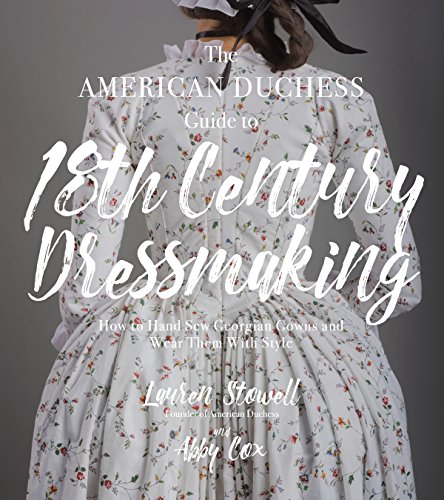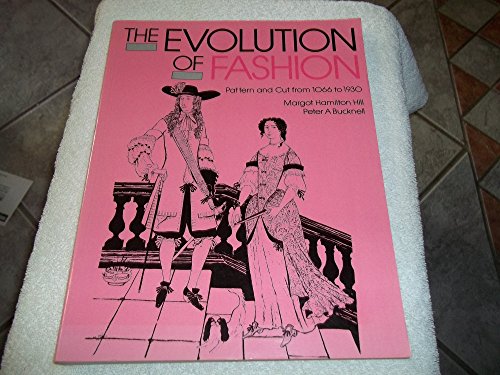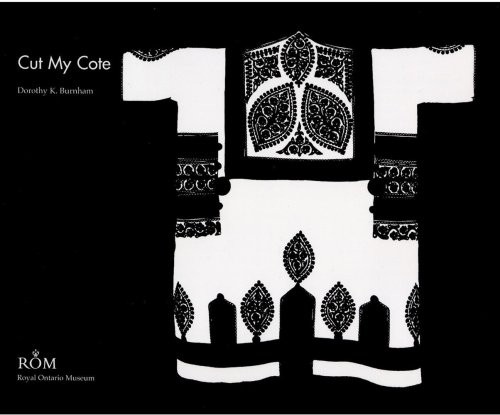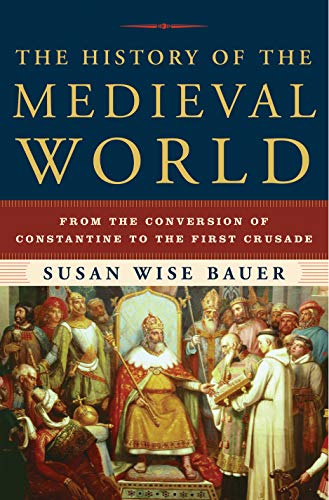Top products from r/HistoricalCostuming
We found 22 product mentions on r/HistoricalCostuming. We ranked the 30 resulting products by number of redditors who mentioned them. Here are the top 20.
2. The Modern Maker: Men's 17th Century Doublets
Sentiment score: 2
Number of reviews: 2
 Show Reddit reviews
Show Reddit reviews4. McCall's Patterns M7763 E5 Misses' Renaissance Dress and Skirt by Angela Clayton, Size 14-22
Sentiment score: 0
Number of reviews: 1
Size E5 (14-16-18-20-22) Bust 36" - 44" Waist 28" - 37" Hips 38" - 46"Includes pattern pieces and sewing instructionsMade by McCall'sFABRICS: Broadcloth, Cotton/Cotton Blends, Silk, Shantung, Taffeta, Lining Fabrics.Printed in the U.S.A.
 Show Reddit reviews
Show Reddit reviews5. Medieval Military Costume: Europa Militaria Special No. 8 (Europa Militaria Special, 8)
Sentiment score: 0
Number of reviews: 1
Used Book in Good Condition
 Show Reddit reviews
Show Reddit reviews6. The House of Worth: Portrait of an Archive 1890-1914
Sentiment score: 0
Number of reviews: 1
 Show Reddit reviews
Show Reddit reviews7. Textiles and Clothing, c.1150-1450 (Medieval Finds from Excavations in London) (Volume 4)
Sentiment score: 1
Number of reviews: 1
Used Book in Good Condition
 Show Reddit reviews
Show Reddit reviews8. 1920s Fashion: The Definitive Sourcebook
Sentiment score: 1
Number of reviews: 1
Carlton Books Ltd
 Show Reddit reviews
Show Reddit reviews9. The American Duchess Guide to 18th Century Beauty: 40 Projects for Period-Accurate Hairstyles, Makeup and Accessories
Sentiment score: 0
Number of reviews: 1
 Show Reddit reviews
Show Reddit reviews10. The American Duchess Guide to 18th Century Dressmaking: How to Hand Sew Georgian Gowns and Wear Them With Style
Sentiment score: 1
Number of reviews: 1
The American Duchess Guide to 18th Century Dressmaking How to Hand Sew Georgian Gowns and Wear Them with Style
 Show Reddit reviews
Show Reddit reviews11. Costume Close-Up: Clothing Construction and Pattern, 1750-1790
Sentiment score: 0
Number of reviews: 1
 Show Reddit reviews
Show Reddit reviews12. The Evolution of Fashion: Pattern and Cut from 1066 to 1930
Sentiment score: 1
Number of reviews: 1
Used Book in Good Condition
 Show Reddit reviews
Show Reddit reviews13. Patterns of Fashion 3: The Cut and Construction of Clothes for Men and Women C. 1560-1620
Sentiment score: 1
Number of reviews: 1
Drama Publishers
 Show Reddit reviews
Show Reddit reviews14. The Dress of the People: Everyday Fashion in Eighteenth-Century England
Sentiment score: 1
Number of reviews: 1
 Show Reddit reviews
Show Reddit reviews16. The House of Worth: The Birth of Haute Couture
Sentiment score: 0
Number of reviews: 1
 Show Reddit reviews
Show Reddit reviews17. Medieval Costume and How to Recreate It (Dover Fashion and Costumes)
Sentiment score: 1
Number of reviews: 1
Dover Publications
 Show Reddit reviews
Show Reddit reviews18. Ancient Egyptian, Mesopotamian & Persian Costume (Dover Fashion and Costumes)
Sentiment score: 0
Number of reviews: 1
 Show Reddit reviews
Show Reddit reviews




I'm a huge historical costuming nerd and 18th century is a favorite period of mine. American Duchess' patterns with simplicity are a fabulous place to start.
Use 8579 for your stays, pocket hoops, and chemise.
Watch this video from AD to get some tips about the stays before attempting to make them. They have some tips that Simplicity's pattern instructions simply don't have.
Use 8578 for your gown
For extra help with the gown, you can always check out AD's Guide to 18th Century Dressmaking. It's aimed at hand sewing techniques but has some invaluable information for how it was done back then, and very clear step by step photos and instructions that can help you if/when the pattern throws you for a loop. It also has excellent instructions for how to get the gown to fit properly.
There are plenty of hairstyle tutorials too so find one you like and don't neglect your hair after you've made your beautiful gown. :) It completes the look!
Frustratingly not a lot of sources cover the 1640s. A good start would be 17th Century Men's Dress Patterns by Susan North and Jenny Tiramani. It breaks down several first-early second quarter extant doublets including all their construction and details as well as necessary techniques, as well as some breeches and a few other accessories. The Modern Maker Volume 2 does include some tidbits including a doublet from Anduxar's 1640 Tailoring manual, but I don't know that it would be helpful precisely as some of the details don't seem widely applicable to English clothing, but it might be helpful with changing some details such as raising the waist and making a different sort of laps or tabs.
I think another really good start would be to take a look at the Victoria & Albert Museum's collections. They have several impeccable extant pieces that are exemplars for the era you're after. You'll notice they're pretty distinct from earlier doublets in many of their features (placement of side seams, types of skirting/laps, method of attaching to breeches, shape of the center front bottom, structure, style of wings, types of fastenings, height of waist, shape of seams, type of collar, type of collar fastening, shape of back pieces, and so on), and then not long after your target range doublets start to disappear.
Here are a few good pieces to check out:
Doublet #185-1900
Doublet #177-1900
Suit #T.28&A-1938 (which if you want something possibly a little behind the times, this suit would be excellent to emulate).
Suit #T.58 to B-1910
Crocheting is probably right out, as it wasn't much of a thing, though apparently the author of the Modern Maker has sorted out a way to do it very finely so it looks like needle or bobbin lace.
You will want to get a copy of Janet Arnold's Patterns of Fashion (https://www.amazon.com/Patterns-Fashion-Construction-Clothes-1560-1620/dp/0896760839/ref=pd_sbs_14_t_0?_encoding=UTF8&psc=1&refRID=0W87GRAAK069HWTTFWD3)
There are a series of 3 outfits in that book that belonged to some Swedish nobles (the Sture family) in the 1560's that will give you a fairly good pattern for the clothing that you want.
Those pants are called "pluderhosen" and are pretty tricky to construct. I'm someone with a decent amount of historical costuming experience and I'm just now starting the project to make these after building 4 pairs of simpler pants to work on building up the techniques. I'm fairly satisfied with my most recent version which is based on some of the more simple versions in the Meyer fechtbuch that lack panes, and that might be a good place for you to start as well.
These pants are quite the engineering project, so you'll have to carefully read Janet Arnold's notes and take care to make sure that you understand the correct techniques. There are a large number of gathers and these all must be hand-sewn or the garment will not work. Keep in mind that there is a form-fitting inner lining, an overly large lining layer that is gathered at the waist & leg cuff, and another somewhat fitted (in the crotch) outer layer that includes the panes.
Yes there is a codpiece. It's fairly substantial, but it gets hidden somewhat by the puffs of its inter-lining and it gets somewhat buried by the volume of fabric that surrounds it.
The length of the pluderhosen seems to vary between just above the knee and just below the knee. Longer seems to be more popular with younger, more flashy men and shorter seems to be the more conservative version for the period you're interested in.
Patterns of fashion also has a pattern for a shirts and doublets that should provide a similar fit to the ones seen here.
You may also want to pick up Matthew Gnagy's "The Modern Maker vol 1: Men's doublets" (https://www.amazon.com/Modern-Maker-Mens-Century-Doublets/dp/0692264841). The book describes all of the steps for constructing a doublet (they're more complicated than you might think), though the pattern provided by that book is Spanish and is from a few decades later than the Meyer Fechtbuch.
The two big details to keep in mind are 1) doublets stop at the natural waist (belly-button level) not your hips (which is where modern people usually wear their pants) and 2) the German doublets have a more squared waistline compared to English, Spanish, & French doublets of the era.
The "extra" piece of clothing over the doublet is a jerkin. In German, these get called a "ledergollar." They were frequently made of leather and slashed or pierced. There's a nifty one in Patterns of Fashion that you could use for a pattern; though the original was meant for a child.
The hats of the 1570's aren't the "pizza hat." Those are the really large hats from the earlier "landsknecht" era. By the 1570's the hats are smaller (like in picture #7 of your album), though a lot of woodcuts from this era show a different style called a "tall hat." The floppy hat that you linked (pic 7) is probably a variant of the flat cap. There are some flat cap patterns in Patterns of Fashion, though IIRC, those all require a bit of a gather, which is probably not quite how to make the one that you linked. Tall hats are kind of a cross between a bowler hat and a top hat. They're constructed using wool felt that is shaped over a hat block. You could also get away with a knit and fulled wool flat cap for this period.
Do you have access to a copy of Textiles and Clothing, c.1150-1450. There are descriptions of tablet woven bands from the excavations in there, but I can't remember if there are any from the 12th century. The ones from the 14th and 15th are really pretty and simple to do, but there are some fashion preferences that change between the 12th and 14th centuries. 12thc bands are more likely to be patterned, and the ones from the later periods play more with texture in a single color to replicate woven fabrics like satin and velvet.
Did you stumble across this bibliography while you were researching? One of things you might discover is that a lot of the extant bands from period you're looking at are brocaded with silk or gold thread on a twill background, which is both expensive and hard to do. And it takes so long!
It's been a long time since I've looked at 12th century bands, but for the sake of the time frame, I'd be inclined to do a belt with longways stripes in worsted wool or reeled silk and add a pretty buckle. Maybe about an inch wide? You'll have to see how big the buckle is.
The woven-in patterns like we're accustomed to in modern tablet weaving aren't really a thing in medieval tablet weaving.
ETA: I would also try sending Gina Barrett an email to ask for suggestions. Her company has grown a lot, but she's done a lot of medieval tablet weaving, so she might have better suggestions than I do.
ETA2: 12th century is bliauts. Sorry, I'm stuck in the late medieval period. You don't need a buckle and the belt can be wider than an inch. It should also be so very long. Belts for bliauts wrap around the underbust/waist once, cross in the back, and then come to the front again to tie and dangle past the knees. So four yards or so? Godspeed.
You should look into the "one hour" dresses. They were super popular in the 20's, can be made into day dresses or night dresses depending on the notions and trim, and are incredibly simple to make; Closet Historian and Morgan Donner both have videos of them making them! But if you don't want to look into that, personally I'd pick the afternoon dress. They're really comfortable, and a lot more forgiving of mistakes compared to a lot of the evening wear options.
As for foundations, you want a bandeau bra done in the 1920's style (Long Haired Flapper has a good video), and a pair of knickers (you could opt for Cami-Knickers, too, if you'd rather have a one piece). Longline high waisted girdles are optional imo.
I have a pinterest board that has some undergarment examples if you want to look through it for ideas. But the point is largely to give yourself as straight and boyish a figure as possible- which is exactly what 1920's undergarments were designed to do in most cases... Though how much shaping you actually need is largely dependent on how loose your dress is in the first place. But in general, anything that helps you achieve at least some bust reduction is A+ regardless of whether you go with the Evening, Afternoon, or 1 hour dress.
In terms of additional resources, while I personally hate the book, 1920's Fashion: The Definitive Source Book is fairly easy to get through the Inter-Library Loan system and is perfect if you really want a massive amount of visual references in the way of fashion plates from the era. Because that's all the book is.
I have a book called The Dress of the People by John Styles that’s super informative. I got it through my local library.
https://www.amazon.com/Dress-People-Everyday-Fashion-Eighteenth-Century/dp/0300121199/ref=mp_s_a_1_1?keywords=the+dress+of+the+people&qid=1570843221&sprefix=the+dress+of+the+peop&sr=8-1
You may also check out Colonial Williamsburg’s website or The School of Historical Dress.
If you narrow your focus to a geographical area it will make things easier on you (France, The UK, the Colonies, etc.).
Also you can ask a librarian at your local library to help you (many libraries allow you to do this via email as well). Just make sure it’s an actual library and not a clerk. You can ask for the reference desk and say you need help with research for school if you’re not sure.
Peachey Press does a good range of books on costume of the Tudor/Stewart period. The one I have is this one:
http://www.stuart-hmaltd.com/stuart-clothing-users-guide.php
I've also used a brilliant book for medieval outfits
https://www.amazon.co.uk/Medieval-Costume-Recreate-Fashion-Costumes/dp/0486429857
Hope those are useful.
See if you can get your hands on one of Janet Arnold's Patterns of Fashion books, specifically Vol. 1
This volume has patterns from 1660-1860, so it's much wider a range than what you're looking at, but it'll definitely have detailed and exceptionally authentic regency patterns. Janet Arnold's books are known internationally as being some of the most historically accurate, and they're very in depth. It should have everything you're looking for :)
The book "Evolution of Fashion" is also a great resource for historical pattern shapes: https://www.amazon.com/Evolution-Fashion-Pattern-1066-1930/dp/0896760995
Barbarians, in History of the Medieval World, are defined as people who don't record their own history. Barbarians were also for a time defined as non-Romans. The most influential barbarians were the Goths, they played quite an integral role in the early medieval world and even sacked Rome. Goths were essentially German and were divided up into Visigoths and Ostragoths based on their geography (but this is not a very sharp delineation).
But as you can tell, barbarians are all the tribal civilizations and kingdoms which are lost to time. Any 'uncivilized' people could be called barbarians.
That's handkerchief-weight linen, very fine. You'll probably have a hard time getting any that fine these days. For an understanding of the shapes and construction in the garment, try Ancient Egyptian, Mesopotamian and Persian Costume
This book may have more photos that you can use. The photos are from the V&A museum who has the House of Worth records. The photos are in black and white.
https://www.amazon.com/House-Worth-Portrait-Archive-1890-1914/dp/1851777741/ref=mp_s_a_1_2?keywords=charles+frederick+worth&qid=1574115956&sprefix=charles+fred&sr=8-2
Check out Angela Clayton's renaissance pattern: by McCalls
I mean, there is the Costume Close up, if I remember correctly. The biggest difference between the European styles and the American styles is only that the Americans were about six months to a couple of years behind Europe at that point.
You are probably thinking of Cut My Cote. (amazon link) (review blog) It's a classic.